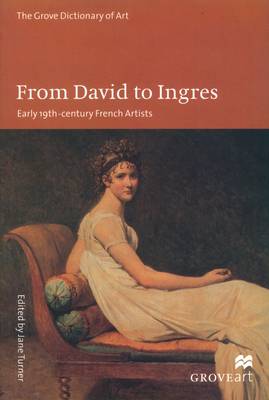
- Afhalen na 1 uur in een winkel met voorraad
- Gratis thuislevering in België vanaf € 30
- Ruim aanbod met 7 miljoen producten
- Afhalen na 1 uur in een winkel met voorraad
- Gratis thuislevering in België vanaf € 30
- Ruim aanbod met 7 miljoen producten
Zoeken
Omschrijving
The early 19th century was among the most exciting and dramatic of political and artistic eras in French history. During the French Revolution and its aftermath, as painters and sculptors were employed as weapons of propaganda, Paris became the artistic capital of Europe. In this unique treatment of this extraordinary period, more than 300 in-depth biographies examine the lives and works of those who brought Neo-classicism to its height, and those who rebelled against this academic ideal with the birth of Romanticism, from David and Ingres to Delacroix and Gericault. With further articles on Realist and Barbizon painters whose works anticipated those of the Impressionists, this is a fascinating guide to a revolutionary period of artistic activity.
The Grove Art series, focusing on the most important periods and areas of art history, is derived from the critically acclaimed and award-winning Grove Dictionary of Art. First published in 1996 in 34 volumes, The Dictionary has quickly established itself as the leading reference work on the visual arts, used by schools, universities, museums, and public libraries throughout the world. With articles written by leading scholars in each field, The Dictionary has frequently been praised for its breadth of coverage, accuracy, authority, and accessibility.
The Grove Art series, focusing on the most important periods and areas of art history, is derived from the critically acclaimed and award-winning Grove Dictionary of Art. First published in 1996 in 34 volumes, The Dictionary has quickly established itself as the leading reference work on the visual arts, used by schools, universities, museums, and public libraries throughout the world. With articles written by leading scholars in each field, The Dictionary has frequently been praised for its breadth of coverage, accuracy, authority, and accessibility.
Specificaties
Betrokkenen
- Auteur(s):
- Uitgeverij:
Inhoud
- Aantal bladzijden:
- 426
- Taal:
- Engels
- Reeks:
Eigenschappen
- Productcode (EAN):
- 9780195168990
- Verschijningsdatum:
- 15/03/2003
- Uitvoering:
- Paperback
- Formaat:
- Trade paperback (VS)
- Afmetingen:
- 231 mm x 155 mm
- Gewicht:
- 1002 g

Alleen bij Standaard Boekhandel
+ 30 punten op je klantenkaart van Standaard Boekhandel
Beoordelingen
We publiceren alleen reviews die voldoen aan de voorwaarden voor reviews. Bekijk onze voorwaarden voor reviews.











